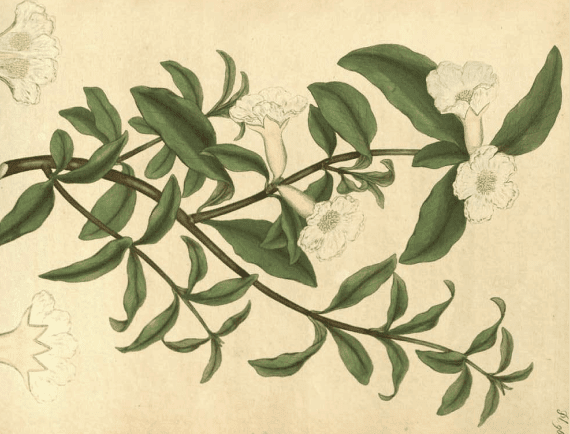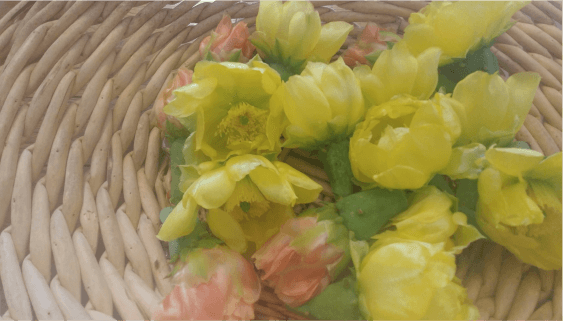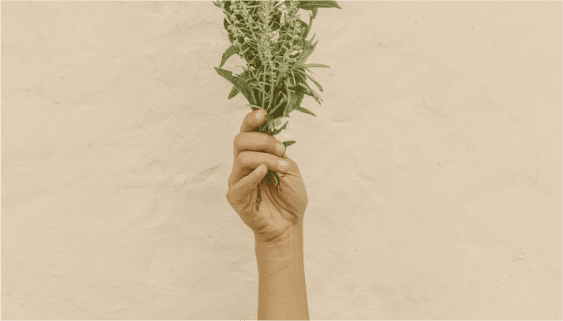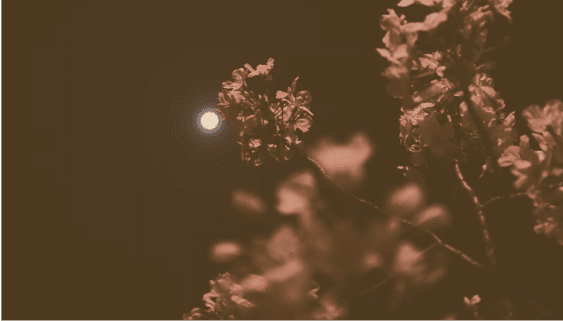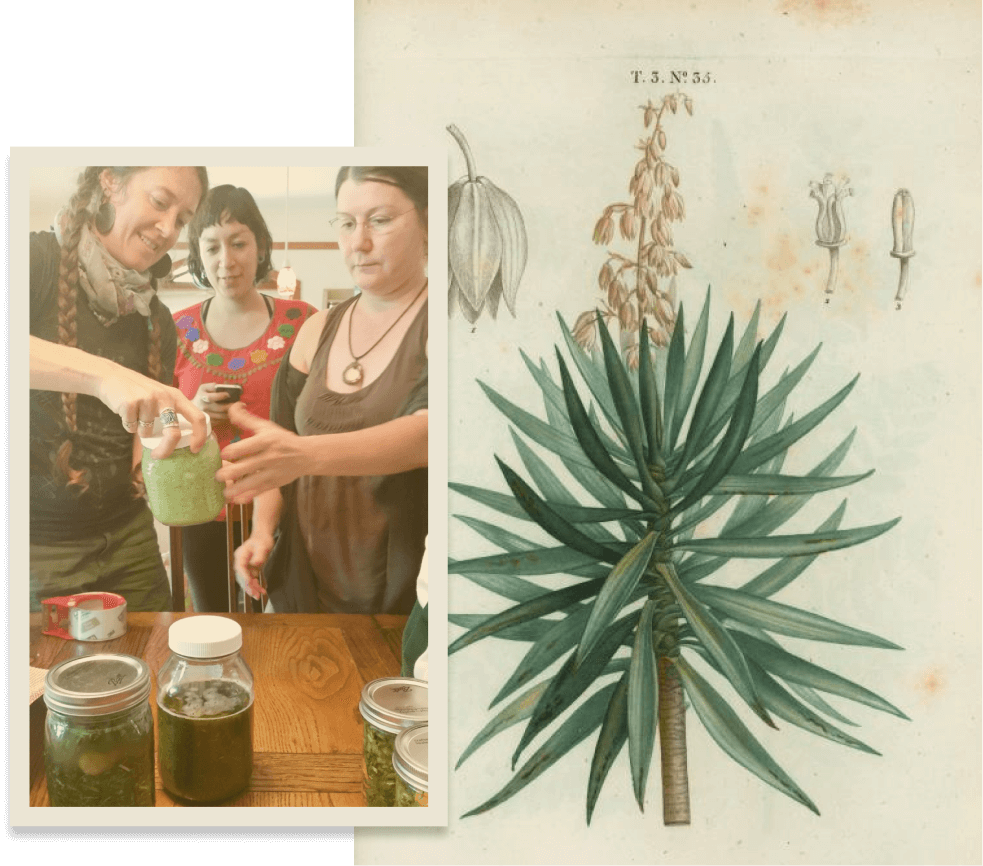Chloe Morris
Spring 2015
Skullcap Monograph
Common name: Skullcap,
also
according to Henriette’s Page Scullcap. Hoodwort. Madweed. Mad-dog or Sideflowering Scullcap. Blue
Pimpernel. Hooded Willow-herb. Scutellaire
according to Henriette’s Page Scullcap. Hoodwort. Madweed. Mad-dog or Sideflowering Scullcap. Blue
Pimpernel. Hooded Willow-herb. Scutellaire
Latin name: Scutellaria spp, there
are many species but the official species is Scutellaria lateriflora
are many species but the official species is Scutellaria lateriflora
Native analogs: Yes, there are many native
varieties. Specifics include Scutellaria drummondii
and Scutellaria suffrutescens
(pink or cherry skullcap)
varieties. Specifics include Scutellaria drummondii
and Scutellaria suffrutescens
(pink or cherry skullcap)
Family: Lamiaceae (the Mint family)
Etymology: Skullcap’s genus name, Scutellaria, comes from the Latin scutella, “a small dish tray or platter”, which refers to the
appearance of the sepals during the fruiting period. The official species name, lateriflora, means “flowering on the
side,” which is how the flowers appear on the one-sided racemes.
appearance of the sepals during the fruiting period. The official species name, lateriflora, means “flowering on the
side,” which is how the flowers appear on the one-sided racemes.
The common name is said to reference
the helmet-like shape of the flowers (Kress).
the helmet-like shape of the flowers (Kress).
Growing: Indigenous, perennial said to
prefer damp locations such as the banks of a stream. For wild crafting 7song says he harvests it in
seed taking the upper 2/3 of the plant. He
cautions to not pick the root, as skullcap has a delicate root system.
prefer damp locations such as the banks of a stream. For wild crafting 7song says he harvests it in
seed taking the upper 2/3 of the plant. He
cautions to not pick the root, as skullcap has a delicate root system.
History:
Skullcap has a long and varied
history, In the United States the root was used by the Cherokee and other
indigenous tribes for “promoting menstruation…treating diarrhea,
kidney problems and breast pains, and to help expel the afterbirth.” Also the
Iroquois “used an infusion of the powdered roots to prevent smallpox and to keep
the throat clean” It was also purportedly used ceremonially in the transition
of young girls to womanhood (Kress).
history, In the United States the root was used by the Cherokee and other
indigenous tribes for “promoting menstruation…treating diarrhea,
kidney problems and breast pains, and to help expel the afterbirth.” Also the
Iroquois “used an infusion of the powdered roots to prevent smallpox and to keep
the throat clean” It was also purportedly used ceremonially in the transition
of young girls to womanhood (Kress).
In the 1700s it
became a popular treatment for rabies, hence its common name “mad-dog weed” A prominent
doctor, Dr. Vandesveer, claimed to have prevented 4,000 people and 1,000 cattle from being
infected after having been bitten by rabid dogs, by treating with
skullcap. He was said to have used
skullcap both as a cure and a prophylactic against the hydrophobia symptomatic
of rabies infection. It seems that his claim was questioned heavily and by 1852
Eclectic doctors John King and Robert Newton had dismissed skullcap as a
treatment for rabies, though a number of eclectics and physicians were have
said to have found success in its use.
became a popular treatment for rabies, hence its common name “mad-dog weed” A prominent
doctor, Dr. Vandesveer, claimed to have prevented 4,000 people and 1,000 cattle from being
infected after having been bitten by rabid dogs, by treating with
skullcap. He was said to have used
skullcap both as a cure and a prophylactic against the hydrophobia symptomatic
of rabies infection. It seems that his claim was questioned heavily and by 1852
Eclectic doctors John King and Robert Newton had dismissed skullcap as a
treatment for rabies, though a number of eclectics and physicians were have
said to have found success in its use.
Despite that
dismissal the eclectic doctors seemed to find much use for skullcap as during
the late 19th and early 20th century they prescribed
skullcap for “nervousness caused by illness, teething, and mental or physical
exhaustion; nervousness with muscular spasms; heart disorders of the nervous
type with intermittent pulse; hysteria accompanied by uncontrollable muscular
action; tremors; and subsultus tendinum (twitching of the tendons, notably the
wrist, during low fevers)” (Kress).
dismissal the eclectic doctors seemed to find much use for skullcap as during
the late 19th and early 20th century they prescribed
skullcap for “nervousness caused by illness, teething, and mental or physical
exhaustion; nervousness with muscular spasms; heart disorders of the nervous
type with intermittent pulse; hysteria accompanied by uncontrollable muscular
action; tremors; and subsultus tendinum (twitching of the tendons, notably the
wrist, during low fevers)” (Kress).
King’s American Dispensatory also recommended skullcap for convulsions, delirium tremens,
intermittent fever, neuralgia, tremors, and chorea (involuntary, rapid, jerky,
forceful movements) and The American Materia Medica, Therapeutics and Pharmacognosy includes the following
additional uses for skullcap: twitching, nervous tics, epilepsy, paralysis
agitans (a progressive, degenerative neurologic disease), and irritability and
restlessness with nervous excitability and sleeplessness (Kress).
intermittent fever, neuralgia, tremors, and chorea (involuntary, rapid, jerky,
forceful movements) and The American Materia Medica, Therapeutics and Pharmacognosy includes the following
additional uses for skullcap: twitching, nervous tics, epilepsy, paralysis
agitans (a progressive, degenerative neurologic disease), and irritability and
restlessness with nervous excitability and sleeplessness (Kress).
Taste: Bitter
Matthew Wood, Kiva Rose, and many
others all recognize this herb to be bitter.
It is classified as a bitter mint.
others all recognize this herb to be bitter.
It is classified as a bitter mint.
Energetics: Cool Dry
Cool and Dry (Kiva Rose)
We also learned in class that the
native analogs might be a little more warming than the official species.
native analogs might be a little more warming than the official species.
Tissue states:
Matthew Wood indicated Skullcap for
excitation, constriction, and atrophy. (Wood)
excitation, constriction, and atrophy. (Wood)
Constituents:
According to David Hoffman skullcap
has “flavanoid glucoside, including scutellarin and scutellarein; trace of
volatile oil, bitter”
has “flavanoid glucoside, including scutellarin and scutellarein; trace of
volatile oil, bitter”
Actions: Nerve tonic, sedative,
antispasmodic, restorative, digestive bitter
antispasmodic, restorative, digestive bitter
David Hoffman classifies Skullcap as
a Nervine tonic, sedative and antispasmodic.
a Nervine tonic, sedative and antispasmodic.
Kiva Rose and 7song make note of a restorative
action, classifying it as a relaxant nerve trophorestorative. “it rebuilds the
nerves from the inside out while relaxing any impediment to the release of
tension. It opens up the internal flow of energy and stress, helping to move it
and let it cycle out. This is different from just sedating the nerves because
it’s a nourishing, native process for the body.” (Rose, 2008)
action, classifying it as a relaxant nerve trophorestorative. “it rebuilds the
nerves from the inside out while relaxing any impediment to the release of
tension. It opens up the internal flow of energy and stress, helping to move it
and let it cycle out. This is different from just sedating the nerves because
it’s a nourishing, native process for the body.” (Rose, 2008)
Older texts go into depth on the
specific mechanisms of the actions, The Eclectic Materia Media (1922) states “By controlling nervous
irritability and muscular incoordination it gives rest and permits sleep. It
may be exhibited to advantage during acute and chronic illness to maintain
nervous balance, control muscular twitching and tremors.” (Kress)
specific mechanisms of the actions, The Eclectic Materia Media (1922) states “By controlling nervous
irritability and muscular incoordination it gives rest and permits sleep. It
may be exhibited to advantage during acute and chronic illness to maintain
nervous balance, control muscular twitching and tremors.” (Kress)
Likewise Dr. Coe wrote in1858, that Skullcap “soothes and quiets the
irritability of the nervous system,
giving tone and regularity of action, lessens cerebral excitement,abates
delirium, diminishes febrile excitement, excites diaphoresis and diuresis, and
accomplishes its work without any subsequent unpleasant reactions.”(Wood 323)
irritability of the nervous system,
giving tone and regularity of action, lessens cerebral excitement,abates
delirium, diminishes febrile excitement, excites diaphoresis and diuresis, and
accomplishes its work without any subsequent unpleasant reactions.”(Wood 323)
Skullcap’s bitter taste also could
classify it as a digestive bitter.
classify it as a digestive bitter.
Medicinal Uses:
Skullcap is considered by many prominent
herbalists to be an incredibly useful herb. William LeSassier calls Skullcap
the “the perfect nervine” It doesn’t drag on the rest of the system, good for
all formulas. Sedates fire in the small intestine that would otherwise burn off
energy too quickly…Holds energy in the body. Good for overthinkers” (Wood).
herbalists to be an incredibly useful herb. William LeSassier calls Skullcap
the “the perfect nervine” It doesn’t drag on the rest of the system, good for
all formulas. Sedates fire in the small intestine that would otherwise burn off
energy too quickly…Holds energy in the body. Good for overthinkers” (Wood).
Likewise Michael Moore has said that Skullcap
“is a sure treatment for almost any nervous system malfunction of a mild or
chronic nature, from insomnia to fear to nervous or sick headaches, and as a
palliative-restorative when pasturing out from stress” (Wood).
“is a sure treatment for almost any nervous system malfunction of a mild or
chronic nature, from insomnia to fear to nervous or sick headaches, and as a
palliative-restorative when pasturing out from stress” (Wood).
Matthew Wood lists a number of
indications for the use of Skullcap. He suggests that it is generally indicated
for someone who is oversensitive and lacks resistance to stimulation. He indicates
its use for nervous, anxious states, restlessness, and irritability in the
mind. Though Wood and others stress the calmative effect on the nervous system
effect in calming the mind, the effects of this herb are not limited to the
nervous system. Wood also indicates it in GI pains, menstrual spasm and
irritation, and for muscle tension and twitch (where nervousness is a root
cause). Wood also writes about its use in fever, acutely treating the delirium
but also afterwards to restore nervous and circulatory function once it has
passed.
indications for the use of Skullcap. He suggests that it is generally indicated
for someone who is oversensitive and lacks resistance to stimulation. He indicates
its use for nervous, anxious states, restlessness, and irritability in the
mind. Though Wood and others stress the calmative effect on the nervous system
effect in calming the mind, the effects of this herb are not limited to the
nervous system. Wood also indicates it in GI pains, menstrual spasm and
irritation, and for muscle tension and twitch (where nervousness is a root
cause). Wood also writes about its use in fever, acutely treating the delirium
but also afterwards to restore nervous and circulatory function once it has
passed.
Much attention is paid to its restorative
effect. Hoffman writes, “It relaxes states of nervous tension whilst at the
same time renewing and revivifying the central nervous system.” He also indicates it in the treatment of epilepsy,
seizure, hysterical states, premenstrual tension, and any exhausted or depressed
conditions.
effect. Hoffman writes, “It relaxes states of nervous tension whilst at the
same time renewing and revivifying the central nervous system.” He also indicates it in the treatment of epilepsy,
seizure, hysterical states, premenstrual tension, and any exhausted or depressed
conditions.
Kiva Rose considers
Skullcap to be CNS restorative calling it “an extremely effective nerve tonic,
and seems to truly rebuild and restore a damaged or exhausted nervous system.”
She add on that “in addition to strengthening the nervous system, it also helps
retrain the body to deal with stress in more productive ways, encouraging it
move along rather than stagnating or sticking in one tired, manic part of your
brain or body.”
Skullcap to be CNS restorative calling it “an extremely effective nerve tonic,
and seems to truly rebuild and restore a damaged or exhausted nervous system.”
She add on that “in addition to strengthening the nervous system, it also helps
retrain the body to deal with stress in more productive ways, encouraging it
move along rather than stagnating or sticking in one tired, manic part of your
brain or body.”
She notes that constitutionally
it is will “clear heat, infection and toxins, making
an extra useful nerve tonic for the Pitta/Adrenal stress person.” As for specific conditions she lists “muscle
cramps, insomnia, irritability, and general nervous hypersensitivity” and
mentions using it successfully for shingles and sciatica. As for its bitter
qualities they “have a relaxing effect on the liver and a stimulating effect on
digestion” She notes the effect of its use on herself “Taking a few drops under
my tongue, I was able to tangibly feel my muscles relax, the floodgates open
and the life energy flow through my body, allowing me to finally relax into the
bed and blankets and welcome embrace of sleep.”
it is will “clear heat, infection and toxins, making
an extra useful nerve tonic for the Pitta/Adrenal stress person.” As for specific conditions she lists “muscle
cramps, insomnia, irritability, and general nervous hypersensitivity” and
mentions using it successfully for shingles and sciatica. As for its bitter
qualities they “have a relaxing effect on the liver and a stimulating effect on
digestion” She notes the effect of its use on herself “Taking a few drops under
my tongue, I was able to tangibly feel my muscles relax, the floodgates open
and the life energy flow through my body, allowing me to finally relax into the
bed and blankets and welcome embrace of sleep.”
Susun Weed and 7song both
praise it for is pain relieving abilities. Weed insists that “Skullcap tincture relieves almost any pain,
especially when the nerves are involved. Try skullcap when bothered by sciatica
pain, neuralgia, toothache, eye twitches, or ringing in the ears.” She also
uses it for headaches and for people getting over addiction (Weed 2008) 7song
notes that while it is not necessarily the strongest pain reliever, it can help
focus and amplify the efficiency of other remedies” (7song) He also goes on to
talk about how it is less likely to cause lethargy than other pain relieving
herbs, noting that because of
this “people can take it while performing tasks that they need to be cognizant
for.”
praise it for is pain relieving abilities. Weed insists that “Skullcap tincture relieves almost any pain,
especially when the nerves are involved. Try skullcap when bothered by sciatica
pain, neuralgia, toothache, eye twitches, or ringing in the ears.” She also
uses it for headaches and for people getting over addiction (Weed 2008) 7song
notes that while it is not necessarily the strongest pain reliever, it can help
focus and amplify the efficiency of other remedies” (7song) He also goes on to
talk about how it is less likely to cause lethargy than other pain relieving
herbs, noting that because of
this “people can take it while performing tasks that they need to be cognizant
for.”
Local Herbalists I asked
had similar observations. Ivy Zwicker hasn’t used it much in practice but
mentioned using it to help with her husband’s headaches. Herbalist Carolyn
Galloway told me she made a tincture that she uses in a pain elixir, and she
also uses it in a stress buster tea blend. Personally she has used it for a
chronic issue telling me “I took it at night for an extended period of
time to help me relax and help with the chronic pain.”
had similar observations. Ivy Zwicker hasn’t used it much in practice but
mentioned using it to help with her husband’s headaches. Herbalist Carolyn
Galloway told me she made a tincture that she uses in a pain elixir, and she
also uses it in a stress buster tea blend. Personally she has used it for a
chronic issue telling me “I took it at night for an extended period of
time to help me relax and help with the chronic pain.”
Preparations:
Infusion:
boil 1-2 tsp dried herb and leave to
infuse 10-15 minutes (Hoffman).
boil 1-2 tsp dried herb and leave to
infuse 10-15 minutes (Hoffman).
7song recommends .4 oz boiled in 1qt
water as a good tea.
water as a good tea.
Tincture: Fresh 1:2, Dried 1:5 45-60% alcohol
*Susun Weed insists fresh is better “Drying skullcap or wolf mint evaporates most of the
delicate components that make these plants so gently effective. So I use only
the very freshest plant material.
delicate components that make these plants so gently effective. So I use only
the very freshest plant material.
Glycerite: fresh 1:2, dry 1:5 60&
Dosage:
Infusion: 3 times a day as needed (Hoffman).
*Rose notes
that this method may have a more sedating effect than tincture.
that this method may have a more sedating effect than tincture.
Tincture: 1.5-2 dropperfuls 2-5 times daily for
tonic dose, for more acute ½- tsp (7song).
tonic dose, for more acute ½- tsp (7song).
*Weed specifies “I find a small dose (3-5 drops of
fresh skullcap tincture) takes the edge off a simple tension headache in a few
minutes. A larger dose (10-15 drops), taken three or four times at the
beginning of a major headache, can often stop it from coming on or moderate its
pain and length. A really large dose (a dropperful or 15-25 drops) will make
you very sleepy.”
fresh skullcap tincture) takes the edge off a simple tension headache in a few
minutes. A larger dose (10-15 drops), taken three or four times at the
beginning of a major headache, can often stop it from coming on or moderate its
pain and length. A really large dose (a dropperful or 15-25 drops) will make
you very sleepy.”
She also notes that for help in getting to sleep “as
little as ten drops in a cup of warm milk (or hot chocolate)” is quite
effective.
little as ten drops in a cup of warm milk (or hot chocolate)” is quite
effective.
Herbal Pairings
Valerian (Hoffman)
Blue Sage- general tonic (Rose).
California Poppy or Wild Peony- for more muscle
related tension (Rose).
related tension (Rose).
Milky Oats and or Vervain tincture for rebuilding
and restoring nervous system (Rose).
and restoring nervous system (Rose).
Evening Primrose – as a general
tonic, or for tension related GI distress with anxiety or depression (Rose).
tonic, or for tension related GI distress with anxiety or depression (Rose).
St. John’s Wort – ease
migraines, relax stiff muscles, and relieve pain throughout the body (Weed).
migraines, relax stiff muscles, and relieve pain throughout the body (Weed).
Crampbark- menstrual pain (7song)
Pedicularis: back pain (7song)
Contraindications: none other than caution in
pregnancy. There are some warnings out there of liver toxicity but in those
cases there is no way of tracing it back to skullcap, also in these cases it is
thought that another herb is being passed off as skullcap. Using skullcap is
safe as long as you have it properly identified. If you are going to purchase
it, make sure it is from a reputable source.
pregnancy. There are some warnings out there of liver toxicity but in those
cases there is no way of tracing it back to skullcap, also in these cases it is
thought that another herb is being passed off as skullcap. Using skullcap is
safe as long as you have it properly identified. If you are going to purchase
it, make sure it is from a reputable source.
Personal Experience
Infusion:
I made an
infusion a few times using the dried plant material I purchased from mountain
rose, I took it before I went to sleep and it seemed to aid in making me fall
asleep or at least get in the mood to sleep. I like the taste even though it is
bitter it is not unpleasant.
infusion a few times using the dried plant material I purchased from mountain
rose, I took it before I went to sleep and it seemed to aid in making me fall
asleep or at least get in the mood to sleep. I like the taste even though it is
bitter it is not unpleasant.
I was also
given Skullcap in a blend of other herbs by Nicole as a tea to help with my
migraines. For this I feel like she is
using the skullcap both for pain and for the restorative effect, and since it
is both in a blend and working long term it is hard for me to pinpoint its
exact effects.
given Skullcap in a blend of other herbs by Nicole as a tea to help with my
migraines. For this I feel like she is
using the skullcap both for pain and for the restorative effect, and since it
is both in a blend and working long term it is hard for me to pinpoint its
exact effects.
Tincture:
I made a tincture of dried Skullcap
from Mountain Rose. I also helped make a fresh tincture with our class using
the simplers method when we were wildcrafting at Alma de Mujer. I noticed that for both instances the plant
matter is super absorbant and you end up using more alcohol in order to get it
covered, as well as having to press or really squeeze the material to get the
liquid out when decanting. I also
noticed that for the fresh tincture the color was very green when we decanted
it.
from Mountain Rose. I also helped make a fresh tincture with our class using
the simplers method when we were wildcrafting at Alma de Mujer. I noticed that for both instances the plant
matter is super absorbant and you end up using more alcohol in order to get it
covered, as well as having to press or really squeeze the material to get the
liquid out when decanting. I also
noticed that for the fresh tincture the color was very green when we decanted
it.
I look forward to using skullcap in the
future, before this class I had never even heard of it and certainly had no
idea it was such a useful little herb!
future, before this class I had never even heard of it and certainly had no
idea it was such a useful little herb!
Pictures


Skullcap (Kress)

Scutellaria lateriflora (7song)

Scutellaria spp.
Works Cited
Henriette Kress. “Skullcap.”
henriettes-herb.com Web. May
2015<http://www.henriettes-herb.com/eclectic/kings/scutellaria.html>
henriettes-herb.com Web. May
2015<http://www.henriettes-herb.com/eclectic/kings/scutellaria.html>
Hoffman, David. “Skullcap.” Holistic
Herbal: A Safe and Practical Guide to Making and Using Herbal Remedies.
London: Thorsons, 2002. 233. Print.
Herbal: A Safe and Practical Guide to Making and Using Herbal Remedies.
London: Thorsons, 2002. 233. Print.
Rose, Kiva. “Blisswort as Energy Modulator and
Nerve Restorative.” The Medicine Womans Roots. N.p., 17 Dec. 2007.
Web. May 2015.
<http://bearmedicineherbals.com/blisswort-as-energy-modulator-and-nerve-restorative.html>.
Nerve Restorative.” The Medicine Womans Roots. N.p., 17 Dec. 2007.
Web. May 2015.
<http://bearmedicineherbals.com/blisswort-as-energy-modulator-and-nerve-restorative.html>.
Rose, Kiva. “Blisswort in Bloom: Subtleties
& Specifics.” The Medicine Womans Roots. N.p., 20 May 2008.
Web. May 2015.
<http://bearmedicineherbals.com/blisswort-in-bloom-subtleties-specifics.html>.
& Specifics.” The Medicine Womans Roots. N.p., 20 May 2008.
Web. May 2015.
<http://bearmedicineherbals.com/blisswort-in-bloom-subtleties-specifics.html>.
Rose, Kiva. “Tree Medicine and the Magic of
Blisswort.” The Medicine Womans Roots. N.p., 23 June 2007. Web. May
2015.
<http://bearmedicineherbals.com/tree-medicine-and-the-magic-of-blisswort.html>.
Blisswort.” The Medicine Womans Roots. N.p., 23 June 2007. Web. May
2015.
<http://bearmedicineherbals.com/tree-medicine-and-the-magic-of-blisswort.html>.
Weed, Susun S. “Skullcap Herbal Adventures
with Susun S. Weed.” Skullcap by Susun Weed. Herbal E-zine, Aug.
2008. Web. May 2015. <http://www.susunweed.com/herbal_ezine/August08/wisewoman.htm>.
with Susun S. Weed.” Skullcap by Susun Weed. Herbal E-zine, Aug.
2008. Web. May 2015. <http://www.susunweed.com/herbal_ezine/August08/wisewoman.htm>.
Wood, Matthew. “Scutellaria Lateriflora, S.
Galericulata. Skullcap.” The Earthwise Herbal: A Complete Guide to New
World Medicinal Plants. Berkeley, CA: North Atlantic, 2009. 323-26. Print.
Galericulata. Skullcap.” The Earthwise Herbal: A Complete Guide to New
World Medicinal Plants. Berkeley, CA: North Atlantic, 2009. 323-26. Print.
7song. “The Skullcaps-A Scutellaria Monograph
« Blog – Northeast School of Botanical Medicine.” Blog Northeast School
of Botanical Medicine. Northeast School of Botanical Medicine, 12 Feb.
2012. Web. June 2015.
<http://7song.com/blog/2012/02/the-skullcaps-a-scutellaria-monograph/>.
« Blog – Northeast School of Botanical Medicine.” Blog Northeast School
of Botanical Medicine. Northeast School of Botanical Medicine, 12 Feb.
2012. Web. June 2015.
<http://7song.com/blog/2012/02/the-skullcaps-a-scutellaria-monograph/>.
Herbalists Contacted via email
Carolyn Galloway
Ivy Zwicker
